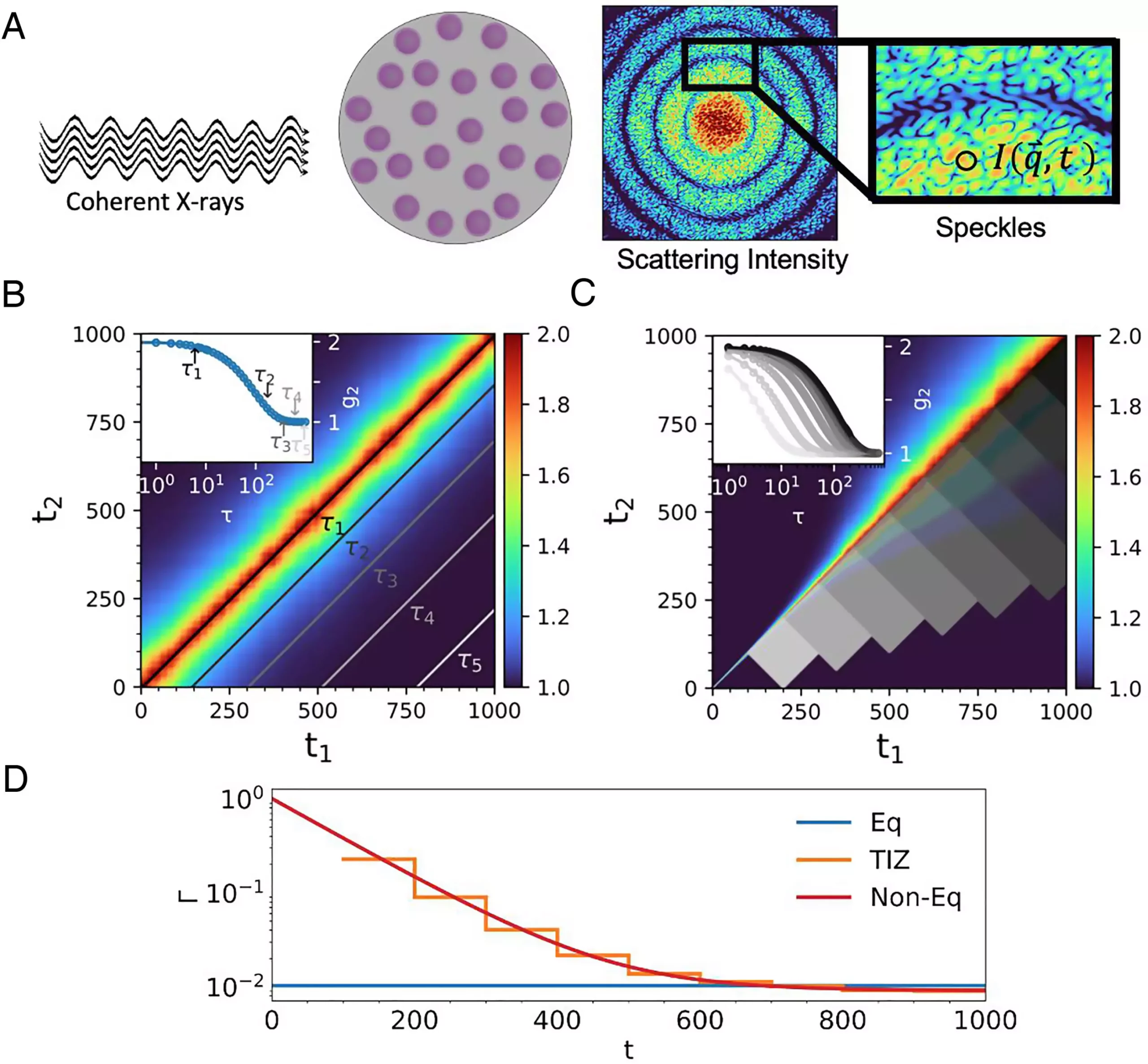Soft matter is an intriguing and dynamic area of scientific study that encompasses a wide variety of materials we encounter in daily life. From the playful substance that children mold and shape to the more complex fluids present in our environment, soft matter plays a pivotal role in various applications. This multifaceted domain has recently seen a significant advancement through research efforts that promise to deepen our understanding and enhance the manipulation of such materials at the nanoscale. The findings, stemming from a collaboration between the Argonne National Laboratory and the Pritzker School of Molecular Engineering at the University of Chicago, shed light on the flow behaviors of soft matter, providing insights that could impact numerous fields ranging from industrial applications to natural phenomena modeling.
At first glance, soft matter might evoke humorous images of children’s toys like Play-Doh. Yet, beneath its playful surface lies a scientifically rich category of materials. Soft matter, which includes substances like mayonnaise, 3D printer gels, and latex paints, is characterized by its ability to deform easily under various stimuli. This property makes it particularly responsive to external factors such as heat, force, or chemical interactions. For example, when painting a wall, a complex interplay of flows occurs at the nanoscale that requires further understanding to optimize usability and ensure stability. By comprehending the mechanical properties at the atomic level, researchers can manipulate these materials in ways that enhance their applications in everyday products.
A significant breakthrough has emerged through a novel application of X-ray photon correlation spectroscopy (XPCS). Historically limited by the need to average data—resulting in a loss of critical information—this advanced technique enables researchers to analyze soft matter with unprecedented precision. The research team, comprising seasoned scientists and dedicated graduate students, devised a method to characterize the often chaotic fluctuations in the dynamics of soft matter nanoparticles. By focusing on the transport coefficient, a key parameter that measures the flow of materials, they can unveil mechanisms underlying the temporal changes in soft matter in response to external stimulation.
This technique unveiled a surprisingly intricate behavior among nanoparticles in a dense salt solution. When subjected to shearing forces, akin to rubbing lotion on the hands, the nanoparticles exhibited distinct bands—fast, slow, and static. The rapid shifts in these bands illuminated the complex interactions at play, information that was previously unattainable with existing analytical methods. The ability to observe these phenomena in near real-time is an important step forward in soft matter science.
The ramifications of this research extend far beyond academic exploration and into practical applications, including the development of improved consumer products and predictive models for natural disasters. The team’s findings could lead to enhanced formulations in paints and lotions, optimizing the balance between viscosity and spreadability. Additionally, understanding the flow mechanics at the nanoscale is crucial for predicting larger systems, such as the behavior of natural substances during landslides or earthquakes.
Moreover, with the impending upgrade of the Advanced Photon Source (APS) facility, the team is poised to utilize an enhanced X-ray beam that promises increased brightness and resolution for future XPCS experiments. This upgrade is set to open new avenues for soft matter research, allowing for a broader array of materials to be studied with enhanced accuracy.
The synthesis of innovative techniques in the study of soft matter presents a fascinating glimpse into the future of scientific exploration at the nanoscale. As researchers continue to unravel the complexities inherent in these materials, we can expect to see significant advancements across numerous fields. By mastering the flow properties and interactions within soft matter systems, scientists may harness new technologies that not only improve our everyday lives but also equip us to better understand the natural world around us. The collaborative efforts of institutions such as Argonne National Laboratory and the University of Chicago represent a beacon of progress in the scientific community, paving the way for future explorations that may transform our approach to both technology and nature.


Leave a Reply